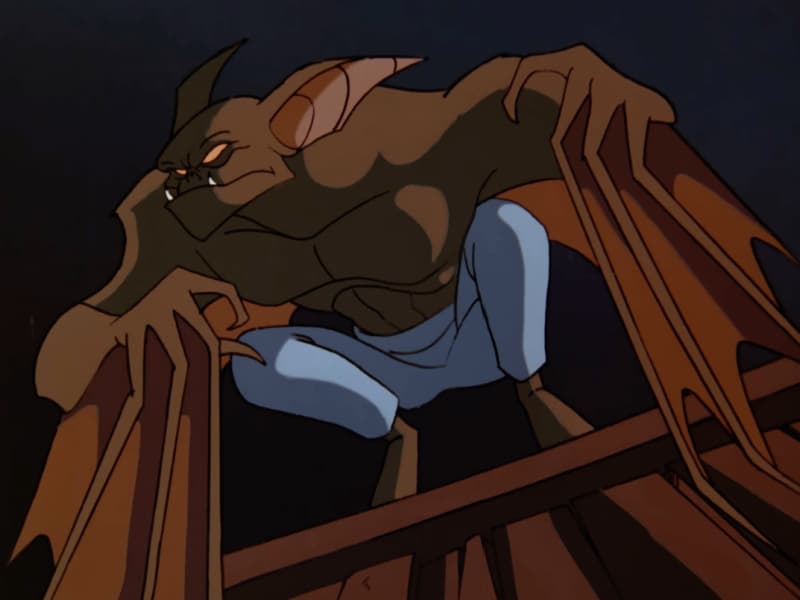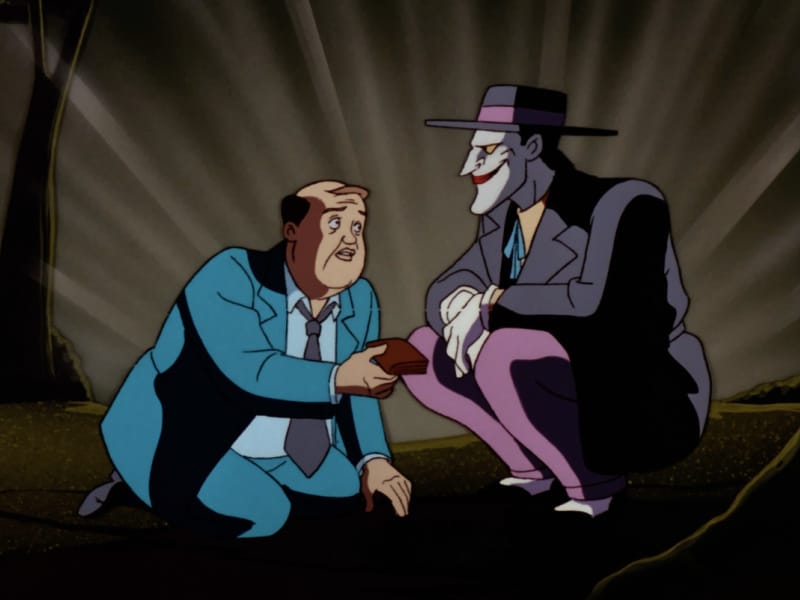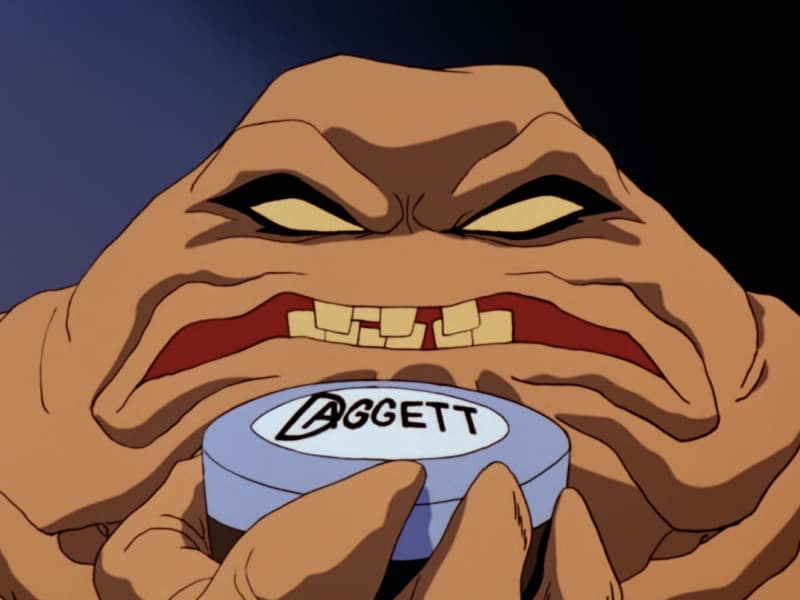[ad_1]
Welcome to Saturday Morning Cartoons, our weekly column where we continue the animated boob tube ritual of yesteryear. Our lives may no longer be scheduled around small screen programming, but that doesn’t mean we should forget the necessary sanctuary of Saturday ‘toons. In this entry, we celebrate the arrival of Batman: The Animated Series on HBO Max by ranking the ten best episodes.
From the minute DC Comics properties launched on HBO Max, folks started clamoring for Batman: The Animated Series. The early ’90s cartoon show is considered by many as the pinnacle of Bat-entertainment, with Kevin Conroy universally declared the best Batman. The only persons who would dare disagree are the ones who’ve never had the pleasure of devouring the three-season series.
Well, no more excuses, friends. Batman: The Animated Series is here. Get to scarfing.
Why you wouldn’t start from the beginning and consume every single episode, I don’t know. Time is precious, and there’s a lot of television out there. No judgment.
To aid your inevitable newfound obsession, I’ve curated ten specific episodes to convert you to our bats in the belfry choir. These shows reveal a universe much larger than anything glimpsed on the big screen. Yeah, we got The Joker, don’t worry, but how can his grimace compare to terminator Bat-drones and demon heads?
10. “On Leather Wings”

- Directed by Kevin Altieri
- Written by Mitch Brian
- Original Airdate: September 6, 1992
“On Leather Wings” was not the first episode that aired, but it was the first one produced. As such, it operates as a mission statement. Batman is not some camp crusader or grim vigilante. He’s a film noir avenger, poisoned by trauma and desperate to push back against the forces of darkness that spawned his agony.
Selecting the mutant Man-Bat as the Dark Knight’s first adversary was a calculated decision from series co-creator Bruce Timm. He didn’t want his audience to enter the arena with a preconceived notion of who or what threats Bruce Wayne would face. Kirk Langstrom was a comic book deep-cut, an over-reaching scientist twisted by his own work. The Man-Bat is Batman’s nightmare mirror, screaming a pain that cannot be stuffed.
The episode cements the series in the fantastic, embracing the exaggerated reality of noir, gothic melodrama, and German expressionism. Rooted under every action is emotion, with both the heroism and villainy underscoring loss and grief. Batman: The Animated Series not only looked unlike any other cartoon at the time, it felt unlike anything as well. Vengeance ain’t no weekend lark.
9. “His Silicon Soul”
![]()
- Directed by Boyd Kirkland
- Written by Marty Isenberg & Robert N. Skir
- Original Airdate: November 20, 1992
This sequel to the first season two-parter “Heart of Steel” continues its quest to define artificial intelligence. When the robotic Batman duplicate reawakens, it instinctively returns to Wayne Manor, where it’s confronted with its own false nature. The memories contained within were implanted. Could the feelings of rage and regret be emotional grafts as well?
Except for maybe with the Joker, Batman: The Animated Series always thrived on thrusting its audience behind the wheel of its villains. The robot duplicate is a product of its creation. Batman bashes against his circuitry self, and each punch lands with a hurtful recoil. All the best Bat-stories allow torment to linger; every victory tainted with failure.
8. “Legends of the Dark Knight”

- Directed By Dan Riba
- Written By Robert Goodman
- Original Airdate: October 10, 1998
Throughout his eighty years, Batman has been many things, including a pulp hero crusader, a smiley-faced do-gooder, and a morose vigilante. “Legends of the Dark Knight” seeks to make sense of the varied personalities that have worn the mask of Bruce Wayne. The thought experiment ranks this episode as one of the series’ strangest but also the most celebratory. If Bruce Timm can find value in these assorted iterations, so can you.
The set-up surrounds three Gotham kids who stumble upon the Batman in action. The excitement of the sighting causes each to share an experience they’ve had, or a friend of a friend has had, with the Dark Knight. As they spin their yarns, the show morphs to match their tone. Timm’s designs make way for those of Dick Sprang, Jim Aparo, and Frank Miller.
“Legends of the Dark Knight” prepares its audience for Batman: The Animated Series‘ eventual end. Interpretations come and go, but Batman is forever. If the next one doesn’t jive with your vision, don’t worry, it won’t last. Good luck with the next one, but the one you already love ain’t going anywhere either.
7. “Joker’s Favor”

- Directed by Boyd Kirkland
- Written by Paul Dini
- Original Airdate: September 11, 1992
Picking the best Joker story is a torturous endeavor. Even by 1992, the character was already saddled by two iconic performances (Cesar Romero and Jack Nicholson), but Mark Hamill tore deep into his vocal acrobatics and constructed a legendary interpretation. His Joker marries Romero’s gleeful trickster with Nicholson’s sadism. On the Timm show, you never felt the clown prince would succeed in bloodshed, but the threat of violence was never absent either. Hamill brought danger to every decibel.
“Joker’s Favor” pulls ahead of other clown tales because of how it anchors each scene with menace. An incident of road rage forever links the Joker to bumbling Gotham citizen Charlie Collins. The mild-mannered dope is denied an ordinary existence because of a momentary flair-up, and he looks to Batman to free him of his personal plague.
There are other Joker episodes with more Hamill screentime, but none take advantage of the character’s demonic mystique quite like this one. The Jester of Genocide adopts a Greek God’s persona, molesting the feeble peasants below to stave off boredom more than anything else. He’s petty, sociopathic, and already planning his next gig.
6. “Feat of Clay” Parts 1 and 2

- Directed by Dick Sebast
- Written by Michael Reaves
- Original Airdate: September 8, 1992
Clayface is an all-timer Bat-villain, and I won’t be satisfied until we see him translated into live-action. Within the animated series, the creature is an amalgam of several different characters who held the mantle in the comics, and the result is the superior iteration. This stack of mud who can shift and swim into any shape that suits his hateful desires screams for cinematic adaptation. He’s a walking, talking outburst of primordial fear.
The “Feat of Clay” two-parter explains the beast’s origin. Matt Hagen was an actor addicted to a chemical formula that allowed him to mold his features without makeup. Imagine Lon Chaney ratcheted to the nth degree. An overdose transforms Hagen into Clayface, and Batman must assuage the brute’s tantrum before he topples Gotham.
“Feat of Clay” is an astonishing act of animation. Clayface rushes through the episodes, tumbling into one horrific form after another. For an audience raised on recognizable rogues like The Joker, The Riddler, or The Penguin, Hagen is a totally unclassifiable terror. How can Batman ever flinch at a machine gun umbrella ever again?

[ad_2]
Source link